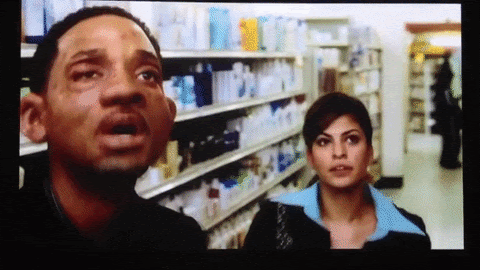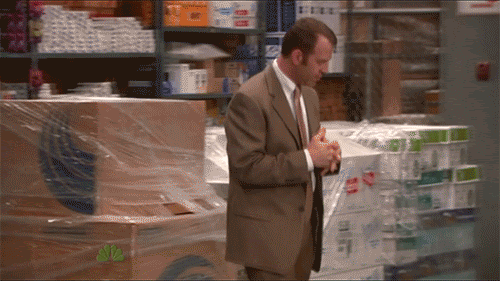-
Summer Savings: Save 20% On LASIK , Find More
*Must mention this promotion and be treated in August of 2024 to qualify. 20% off standard price of Wavelight procedure. Cannot be combined with any other offers.
Swollen Eyelids – Causes and Treatment
You’re ready to go out for the night, you give yourself one last look in the mirror.
That’s when you notice, your eyelids are swollen.
You’ve had swollen eyelids from crying before, but you didn’t spend the last few hours consoling yourself while downing a half-pint of ice cream. You’re in pretty good spirits, so you know your swollen eyelids aren’t tear-related.

Most people will suffer from swollen eyelids from time to time. Though rare, depending on the cause, swollen eyelids could be a symptom of a mild or severe condition that could potentially threaten your eyesight.
Learn the causes of swollen eyelids and what you can do to alleviate the symptoms. Also, find out when a trip to the eye doctor is in order.
Common Causes of Swollen Eyelids
Eye Allergies

Your body’s immune system is on high alert, looking for potential dangers. If your eyes encounter an allergen, such as dust mites or pollen, your immune system will release the chemical histamine. Histamine causes your eye’s blood vessels to swell and become inflamed. Your eyelids will swell and itch, and your eyes will be red and teary.
If you suffer from eye allergies, take allergy medication or use antihistamine eye drops. Also, artificial tears will stop allergy-related dry eyes in their tracks.
Conjunctivitis
You might know conjunctivitis by its common name, pink eye. Pink eye occurs when the clear lining on the eye’s surface (conjunctiva) becomes inflamed due to allergies, a virus, or bacterial infection. Along with itchy, red, and watery eyes, you can expect swollen eyelids with this condition.
If your pink eye is bacterial, you’ll need to take an antibiotic to clear it up. If it’s due to allergies or a viral infection, at-home care will likely alleviate symptoms. This includes artificial tears and applying wet cloths to the eyes every day. However, if your pink eye was caused by the herpes simplex virus, your doctor might prescribe antiviral medications.
Stye
Did you notice red, tender bumps along the edge of your swollen eyelid? If so, you have a stye. Styes form when a tear gland or eyelash follicle gets infected.
You may be able to handle your stye on your own by using warm compresses to promote healing and keep your eyelids clean. However, if the stye doesn’t go away on its own, your eye doctor can help. First, your eye doctor needs to see if the stye is infected. If it is, you might need antibiotics. Your doctor can also perform minor surgery to open the stye.
Chalazion
You might think you have a stye, only for the red bump turn into a sebaceous cyst. This is a chalazion. That’s a fancy term for a bump that forms due to blocked oil glands. Like a stye, a chalazion can cause your eyelids to swell and feel tender.
Warm compresses also work for treating a chalazion. However, if the chalazion is extremely swollen, it’s time to go to the eye doctor. You might need a corticosteroid shot to reduce the inflammation. Your eye doctor also might recommend a minor surgical procedure to drain the chalazion.
Eye Trauma

Everyone knows that you need to protect your eyes from trauma, but it’s impossible to be careful all of the time. If your eyes experience blunt force trauma, you can end up with swollen eyelids. The force of trauma causes your eye to compress and contract and then blood gathers underneath. The entire area will swell and become discolored.
If the swollen eyelid is accompanied by eye pain, blurry vision, or floaters, see an eye doctor immediately. You also need to go to the eye doctor if you can’t move your eye muscles or you feel like something is stuck in your eye.
Periorbital Cellulitis
Periorbital cellulitis is an infection of the skin around the eye and the eyelid. The infection can travel from the sinuses or occur after germs enter the body through a cut or scratch near the eye. Along with swollen eyelids, your skin might feel tender and your eyes might look red. You should not run a fever or experience pain with this condition, though.
If your condition was caused by a bacterial infection, you’ll need to take antibiotics. Otherwise, it should respond to rest and warm compresses.
Orbital Cellulitis
While rare, your swollen eyelids could be due to orbital cellulitis. This condition refers to an infection in the muscles and fat around the eye. The infection affects the cheeks, eyebrows, and eyelids, and it can cause swelling along with other symptoms, such as double vision, decreased vision, pain, and fever. Children are more susceptible to this condition, but most are vaccinated against it. If you think you have orbital cellulitis, immediate treatment is needed. It progresses quickly and can cause blindness. You will likely need to undergo an IV antibiotic treatment to kill the infection.
Ocular Herpes
Ocular herpes is caused by the herpes simplex virus. If you have this virus, you might experience swollen eyelids, redness, sores, tearing, irritation, and watery discharge. Sensitivity to light and the feeling like something is in the eye is also common.
Fast treatment is needed to prevent corneal scarring. Your eye doctor might prescribe antiviral eye drops or medications, and you also might need steroid drops to decrease inflammation.
Graves’ Disease
Your swollen eyelids could be caused by Graves’ disease. This auto-immune disorder causes the immune system to attack the thyroid. While not all people with Graves’ disease have eye-related symptoms, approximately 30 percent suffer from Graves’ ophthalmopathy. Symptoms of this condition including puffy eyelids, bulging eyes, pressure behind the eyes, double vision, and vision loss. Medical care is needed to prevent the progress of vision-related symptoms.
When to Visit the Eye Doctor
You probably won’t know the cause of your swollen eyelids immediately. You’re not an eye doctor, so at first, you won’t know if it’s eye allergies or something more serious.
If you don’t have serious symptoms such as blurred vision or pain, start with allergy medication and warm compresses. Also, don’t wear your contact lenses while you’re dealing with swollen eyelids and avoid rubbing your eyes since that can make the condition worse.
However, if the symptoms get worse instead of better, it’s time to visit the eye doctor. Your vision is important, and not seeking medical care could cause you to damage or even lose it.
If your contact lenses are causing your eyelids to swell and you are considering LASIK as the final solution, then meet with one of our highly regarded doctors to discuss. You can achieve. You can achieve 20/20 vision without contact lenses or eyeglasses. Schedule an appointment, or call LasikPlus at 1.866.755.2026 to learn more about LASIK.
YOU MIGHT ALSO LIKE...
VISION CENTERS NEAR ME
Enter your zip code, city, or a doctor name below to find a vision center.
Find out if LASIK is right for you
Congratulations!
Your vision issues can most likely be corrected with a LASIK procedure. Schedule a free consultation today.
Answer 5 simple questions to see if you are a candidate
What is your age group?
Do you wear...
With corrective lenses, do you have...
Have you ever been told that you have astigmatism?
Have you ever been told that you have dry eyes?
Request an Information Kit
Learn about your surgeon, the latest advanced technology, procedures, options and benefits, financing options, and what to expect from your LASIKPlus experience.









